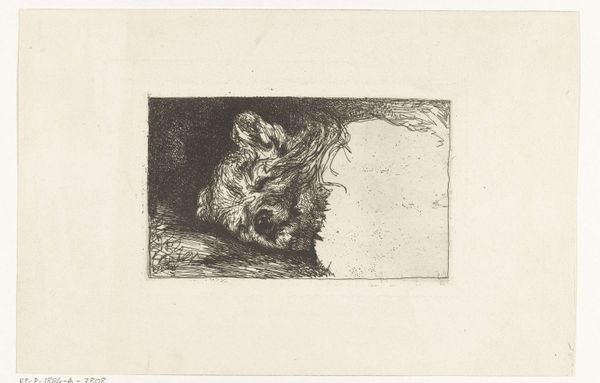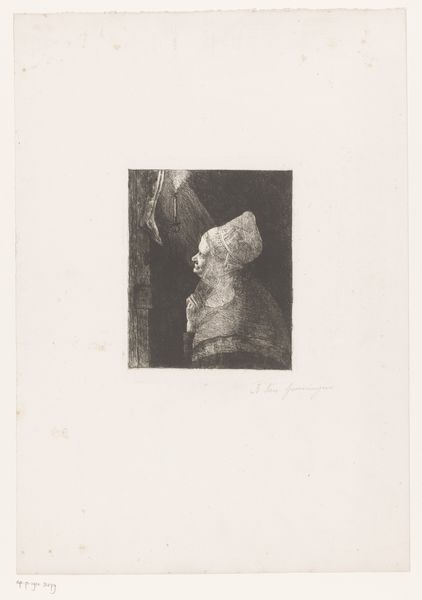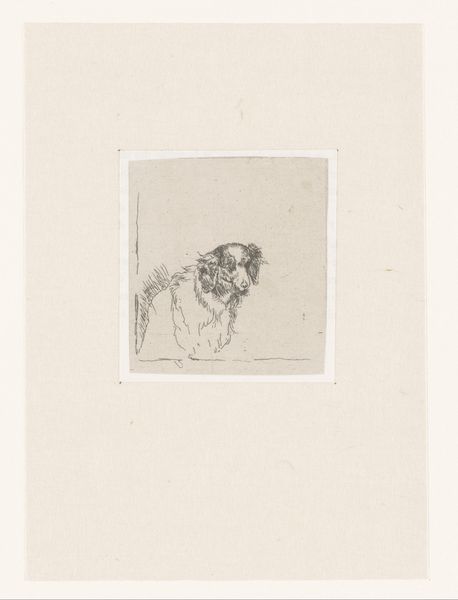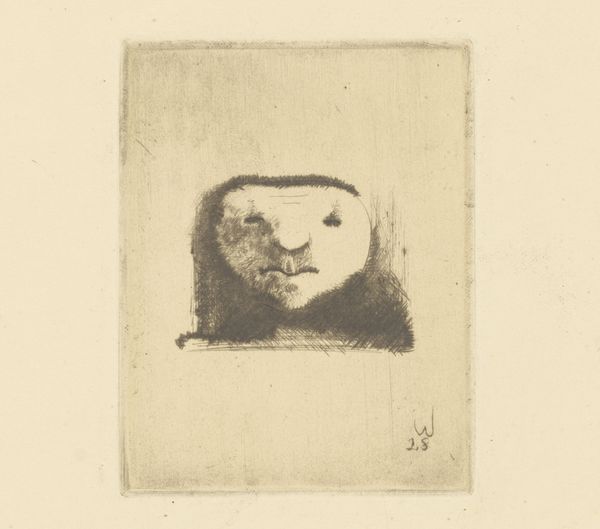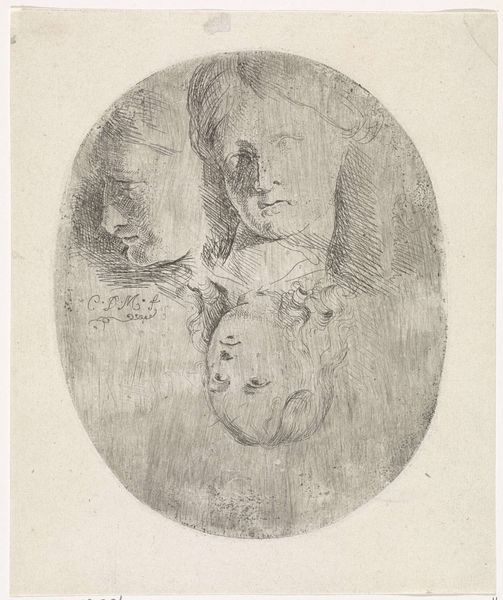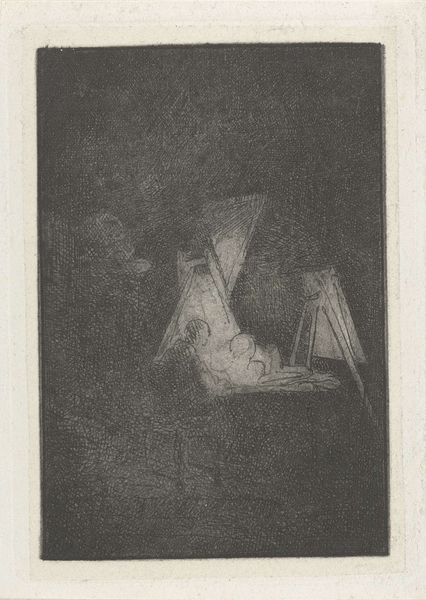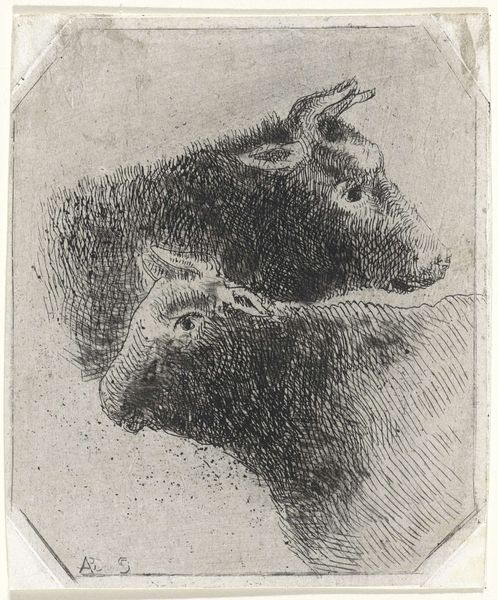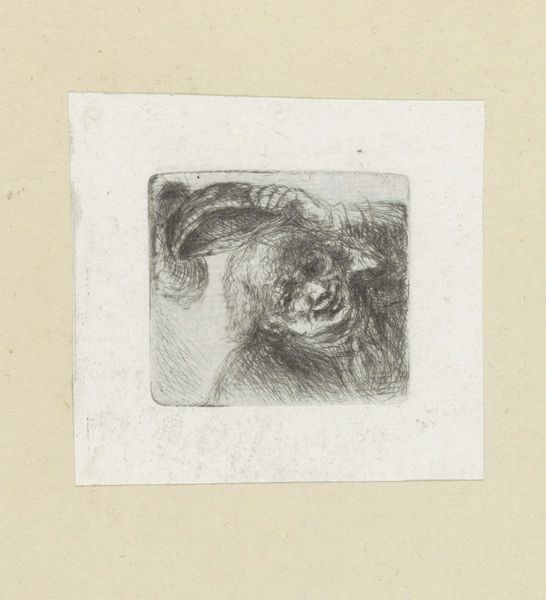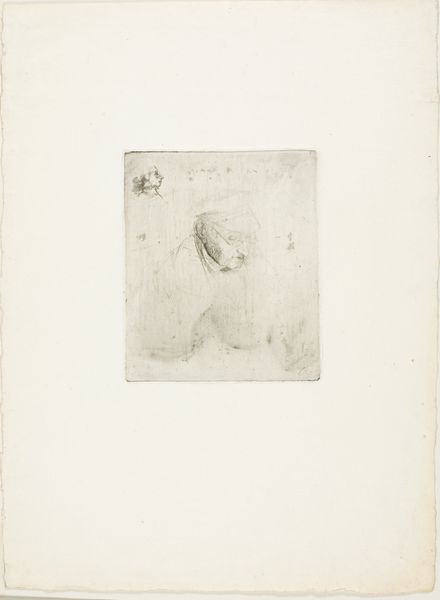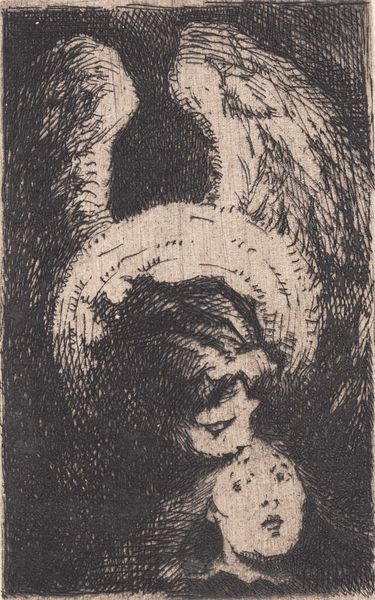
drawing, pencil
#
portrait
#
drawing
#
neoclassicism
#
charcoal drawing
#
pencil drawing
#
pencil
#
realism
Dimensions: height 130 mm, width 96 mm
Copyright: Rijks Museum: Open Domain
Curator: Right, let's dive into this piece. We are looking at "Kop van een panter" or "Head of a Panther", created by Dirk van der Toorn, somewhere between 1788 and 1811. The medium is listed as pencil, a drawing on paper. What strikes you immediately? Editor: That panther looks troubled, almost melancholic, gazing down in its framed confines like some exotic pet forced into a too-small cage. There is sadness to this. Curator: Fascinating take. Consider the neoclassical period. There was an intense focus on observation, but also idealization. I think van der Toorn’s choice of pencil really underscores a direct, unfiltered view. It’s not showy like oils, is it? Editor: Definitely more direct. I am fixated on the animal as subject. Panthers evoke a feeling of wild untamed freedom, yet this one feels bound. Perhaps that is why I feel sad looking at it. Do we know what led van der Toorn to choose this subject? Was there some sort of personal symbolism to the wild creature in a frame? Curator: Unfortunately, direct archival insight eludes us. But contextually, animal studies were quite popular. These allowed artists to understand musculature, form. So there is certainly that instructional layer to the drawing’s existence as well as the Neoclassical embrace of realism. We see how closely he’s observed the textures, light and shadows playing on the fur. Editor: You're right, it does scream 'academic study' but then, something fights against the strictness of that description because you can see his expressive lines—how they almost vibrate with the subject’s barely contained energy. It is difficult to cage in the sublime, is it not? Even with mere pencil. Curator: Indeed, there is inherent tension. And by emphasizing the animal’s confinement within a defined frame, the work does challenge any traditional boundary between "nature" and "culture." What did society want from the labor of artistic perfection in the eighteenth century? I believe this work questions easy answers, easy pleasures. Editor: Now there’s a sobering thought. It’s interesting to realize the artwork remains an enduring provocation even after centuries, if you allow it to be! Curator: That is precisely why it remains here, isn’t it?
Comments
No comments
Be the first to comment and join the conversation on the ultimate creative platform.
